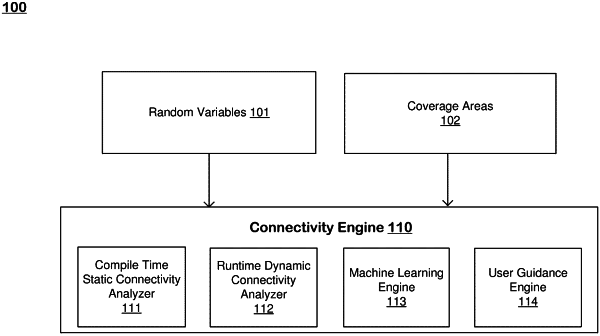| CPC G06F 30/3308 (2020.01) [G01R 31/31835 (2013.01); G01R 31/318357 (2013.01); G06F 30/323 (2020.01)] | 20 Claims |

|
1. A method for verifying an integrated circuit (IC) design described in a hardware description or hardware verification language (HDHVL), the method comprising:
identifying connections between random variables and coverage areas of the IC design, as described in HDHVL code, the connections being identified by determining which coverage areas of the IC design will be influenced during simulation by which random variables, such that each connection identifies, at least, (i) a respective random variable and (ii) a coverage area of the IC design that will be influenced by the respective random variable during simulation;
storing the identified connections in a database; and
using, by a processor connections retrieved from the database to simulate and verify the coverage areas of the IC design.
|